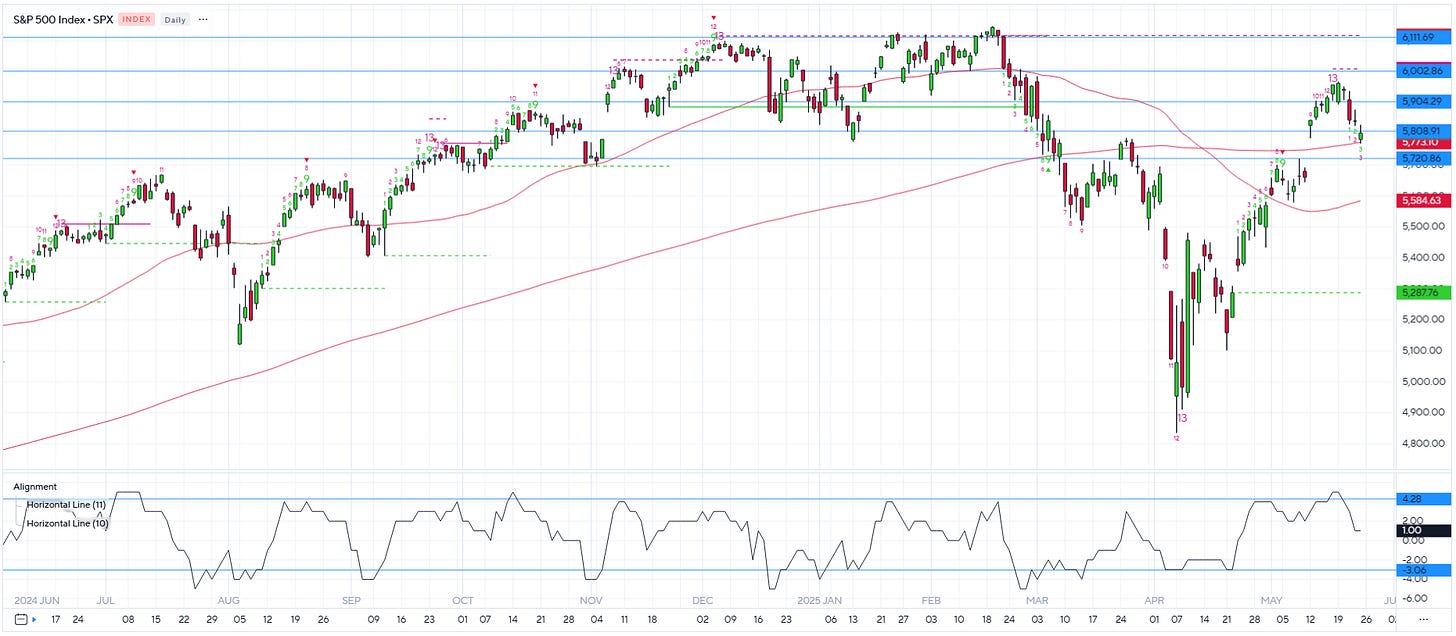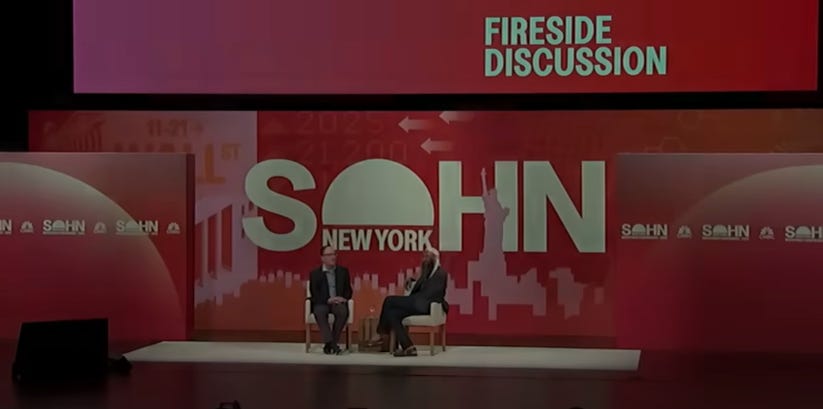Writing every day, I feel like there is too much focus on markets in the short-term so I thought I would zoom out and talk through the major calls from the S&P 500 SPY 0.00%↑ 15 TD model so far this year.
In December, I wrote in my outlook to expect the S&P 500 to test the 200-day moving average by the end of Q1. We got that test right on schedule, and my model below flagged it as a buy, but shortly after that my model started flagging risk again. It didn’t flag the market as a buy again until 4/8 and then again on 4/21. On 4/28 it fired its first sell signal, which after reviewing more closely I said to ignore as it was not confirmed by my most accurate models (also very little red on the metric table around this time), but this recent sell signal on 5/16 was the real deal, which is why I said I had sold my speculative stocks and I was fully hedging.
Overall, I’d say this model continues to kill it. At some point, I may completely switch over to running everything off of option data, but for now I’m having a hard time walking away from all of the other models I built over the years. Feb-Mar 2024 and 4/28 are nudging me to make a decision in the coming months.
From 5/16
We haven’t filled the gap at 5,720 $SPX yet and judging by Friday’s close and the tendency for markets to bottom on Mondays (Tuesday is next week’s Monday because of the holiday), I wouldn’t be surprised to see markets have another weak morning session, followed by a stronger Wednesday and Thursday.
Steve Cohen spoke at the Sohn Investment Conference recently. If you don’t know who he is, you can check out his Wikipedia page. He doesn’t speak publicly very often so it’s always a treat to get inside his head. Him and I share identical views on markets, trading, and on life. You can listen to his chat here.
It’s been a while since I talked about macro views so here are my latest thoughts.
US Growth
The U.S. economy is likely to slow significantly in 2025, with real GDP growth falling from 2.5% in 2024 to just 1.0% year-over-year in both 2025 and 2026. This deceleration is driven by trade policy shocks—specifically, elevated tariffs and immigration restrictions—which dampen both supply and demand. Private consumption and business investment are losing momentum, and while unemployment is set to rise, immigration constraints may limit labor supply and keep the increase modest.
Inflation
While most developed markets are seeing disinflation, the U.S. stands out as an exception due to new tariff implementations. Inflation is expected to temporarily reaccelerate, with core PCE inflation peaking in Q3 2025. Tariffs primarily push up goods prices, while services inflation remains sticky due to constrained labor supply. Inflation should begin to ease again in 2026 but is likely to stay above the Fed’s 2% target.
Markets
Tariff-driven inflation and slower growth heighten risks for equities. Tariffs act as a consumption tax and increase corporate cost pressures. Capex decisions are also being delayed amid trade policy uncertainty, with sectors dependent on global supply chains—like consumer electronics and autos—facing margin compression. Overall market sentiment may remain cautious until clarity returns on trade policy and Fed action.
Interest Rates & The Fed
Despite weakening growth, the Federal Reserve is likely to keep its policy rate unchanged until late 2025, prioritizing inflation control over growth support. I expect the easing cycle to begin in October 2025 and continue into 2026—eventually bringing rates below neutral. In contrast, other major central banks such as the ECB and Bank of England are already in or entering easing cycles due to softer inflation and growth.
Policy Risks
My outlook is still skewed to the downside as I believe the US will experience a mild recession sometime within a year. A re-escalation of tariffs could tip the U.S. into recession, while even a continuation of current trade frictions suppresses growth potential. Political pressures on the Fed—particularly with Chair Powell’s term ending in 2026—raise concerns over central bank independence, further complicating monetary policy expectations.
Enough macro talk, let’s get into the latest model signals.
Keep reading with a 7-day free trial
Subscribe to The Data-Driven Investor to keep reading this post and get 7 days of free access to the full post archives.







